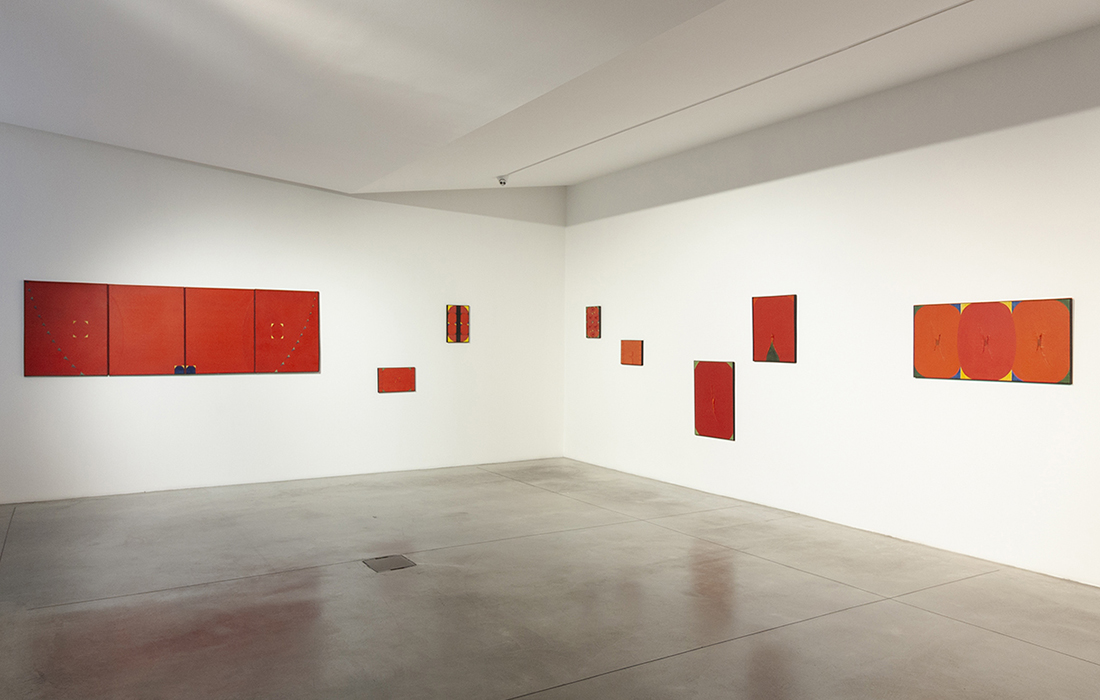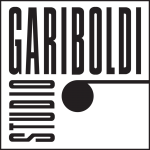November – December 2019
The Studio Gariboldi gallery is pleased to present a solo show dedicated to the Japanese artist Katsumi Nakai (1927-2013), displaying a selection of works created in the 1960s and 1970s during his Milanese period.
Nakai studied painting at the Institut of Fine Arts of Osaka and after completing his studies he participated to several collective exhibitions. In 1956 he had his first solo show at the gallery Omote and in 1958 he founded, with other seven avant-garde artists, the Tekkeikai group.
In the spring of 1964, when he was 37 years old, as many Japanese artists of the time, he decided to visit Europe and the United States. His path took him to Milan, a city that impressed him profoundly to become the last stage of his trip “following the sun”.
The transcription of the original interview made by Lorenzo Vicenti to Katsumi Nakai in occasion of his solo show at the Galleria del Naviglio in 1976, Milan.
V. How many exhibitions have you participated in so far?
N. More than forty, of which half solo shows. On average I prepare one solo show a year in different Italian and foreign cities.
V. Can you describe your works?
N. Impossible. Difficult. I create my works in order to exhibit them, then the public comes and judges. The public tells if it likes it or not. In short: first I draw, then I cut the wood. If my hand and my brain move together, I continue. I stop. I get back to it. When the hand is moving by itself, I’m not happy. I throw everything away and restart. I’m interested in the mystery of the objects that vibrate or change: open and close. I paint the fixed backgrounds with the oil colors and the plywood with the acrylics.
V. When and under what circumstances you came to Milan?
N. In Spring of 1964 I was 37 years old. I gathered the entire family: my elderly mother, my wife Tomiko and the beautiful Mihoko, which stayed my only child. I explained that I had to start my great journey following the sun: towards the West all the way to Europe, up to the United States. I had to breathe in the atmosphere of the Western art, of which I knew only the artworks, or books and reproductions. My ladies told yes, that I could go for one year. So I got to experience Paris, London, Athens, Rome, Milan. I had a letter from Ohashi, a big Japanese collector, to give to Toyofuku who lived in Milan. I arrived to Milan at the end of June. Everything was closed. People were on vacation and I didn’t speak a word of Italian. Toyofuku, of whom I knew only the name, was very kind. He kindly rented me his studio in Via Pontaccio and introduced me to Cardazzo. Also Cardazzo was very nice, he came to see my works and organized my first Italian exhibition in Venice. He always invites his artists first in Venice and then in Milan. Back then I worked only with oil on canvas doing abstract paintings. Mario Deluigi, a great Venetian master, introduced me in March of ’65 with these words: “After Abe, Azuma, Toyofuku, here are the chromatic drafts of Nakai to convince us that the spiritual wind of art blows eternally from the East. A difference of a thumb and the skies and the earth get separated. The secret force of these artists is their capacity to give themselves completely to the universal unconsciousness without never defining a profile through willingness and reason. It is art. Only art, nothing but art.” But I wasn’t happy. I sensed, how do you say?, the necessity to express myself through the third dimension. From a painter to a sculptor. I tried various materials until I discovered that the wood is the most suitable for my sensitivity. I was happy. And this is it.
V. Nakai, admit: meanwhile, were your ladies tired of being alone?
N. I found my place to be in Milan: very ancient for the millenary art, very modern, as my city Osaka, which is the principal industrial and commercial center of Japan. Yes, after Milan I didn’t feel the need to get to know the United States. My world is here. After a few months that I have lived here, I received a letter from Osaka. My wife, Tomiko, informed me that my mother passed away and that she was buried honorably. I replied that my mother, after a long period of suffering, and after losing a child, finally regained the happiness, the serenity. Other months went by, Tomiko wrote again: “It’s time for you to come back.” I replied that I can’t leave because my true art world is here, and I asked to join me here with our daughter Mihoko. They came, and my wife, who is interested in fashion, told me that Paris would be better for her and me, very artistic. I explained to her that regarding the arts Milan is more ancient than Paris, and it’s more similar to Osaka. So we stayed.
V. Have you ever returned to Japan?
N. I returned just once, in 1970, in occasion of the International Exposition in Osaka. My wife also returned once. Mihoko, never. My daughter reads, speaks and writes Italian language better than in Japanese. She attends high school that specializes in classical studies. She is very good.
V. How do you remember Japan during your childhood?
N. I had six siblings, four brothers and two sisters. Our father was a Shinto priest. The term Shinto or Shintoism comes originally from a Chinese word. It means “Doctrine of the Gods”. When I was a child this State religion attributed divine origins to the emperor and to the ruling dynasty. During the day we all lived in a small house near the temple. Every first and fifteenth day of the month my father wore ancient costumes for important ceremonies. On the 13th and 14th of October there was the feast of the temple, a lot of people would come from all over Osaka. The temple was on a small hill surrounded by pine and secular trees. I would run down the hill towards the lawn launching my kite in the sky. I remember that one time my father, on his return from Tokyo, told us that he was admitted to the emperor’s presence. We all were very happy.
V. How have you spent the years of the war?
N. Pretty well. In 1944 my classmates, that were 17 years old like me, started heading to the front as volunteers. Many left, few returned. I didn’t want to be a coward, but I already loved art. Art is life, not death. If you go to the war you have to kill or get yourself killed. I didn’t like it. I asked for advice a very wise woman, a friend of our family. The answer: “Don’t go as a volunteer, do not force the destiny. Wait until you have the right age for being conscripted into the army: 19 years old.” I listened to her. The war ended when I was 18 years old.
V. What was your reaction when you got to know that the Americans dropped the atomic bomb on Hiroshima and Nagasaki, respectively on 6th and 9th of August 1945, mowing down at the same time hundreds of thousands of people?
N. The Japanese journals and the radio didn’t explain right away the mystery of the atomic bomb. They reported: “Big terrible bombardments with many dead”. On 15th of August peace came: The people that up until yesterday were traditionalist and obedient, suddenly became modern, progressive, hungry for more freedom and innovation. Later the journals have explained the horrors of the atomic bomb. And then, for many years, a lot of people affected by the radiation, including children, kept dying. Two artists, Maruki and Akamatsu, who were husband and wife, made paintings that denounced these massacres to the whole world. I never wanted to go and see. Now I like Americans, and I like American Art.
V. Art: why did you choose this path?
N. Postwar period was very hard. There was no food, there was nothing. I followed the path of art, I felt this great vocation. I studied painting at the Institut of Fine Arts of Osaka; I started to exhibit my work from 1956 in my city, at the Kyoto Museum and in Tokyo. In 1958 I founded with other seven avant-garde artists the Tekkeikai group. But few Japanese collectors liked the avant-garde art; people wanted traditional, academic and commercial art. I left and chasing the sun I found Milan. Thank you, Milan.






